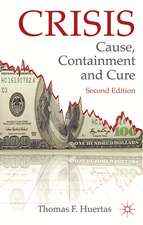Getting Started in Technical Analysis
Autor Jack D Schwageren Limba Engleză Paperback – 4 feb 1999
Preț: 125.16 lei
Recomandat
22.15€ • 25.89$ • 19.23£
Carte disponibilă
Livrare economică 30 ianuarie-13 februarie
Livrare express 16-22 ianuarie pentru 158.06 lei
Specificații
ISBN-10: 0471295426
Pagini: 352
Ilustrații: illustrations
Dimensiuni: 158 x 236 x 22 mm
Greutate: 0.51 kg
Editura: Wiley
Locul publicării:Hoboken, United States
Public țintă
All investors interested in taking a more active role in the week–to–week performance of their investments.Descriere
Revered by many, reviled by some, technical analysis is the art and science of deciphering price activity to better understand market behavior and identify trading opportunities. In this accessible guide, Jack Schwager-perhaps the most recognized and respected name in the field-demystifies technical analysis for beginning investors, clearly explaining such basics as trends, trading ranges, chart patterns, stops, entry, and exit and pyramiding approaches. The book's numerous examples and clear, simple explanations provide a solid framework for using technical analysis to make better, more informed investment decisions and as the basis for mechanical trading systems.
Along with Schwager's invaluable trading rules and market observations culled from years of real-world trading experience, Getting Started in Technical Analysis offers in-depth coverage of: Types of charts-bar, close-only, point-and-figure, candlestick. Chart patterns-one-day, continuation, top and bottom formations, the importance of failed signals. Trading systems-trend-following, counter-trend, pattern recognition.
Charting and analysis software-price data issues, time frame/trading style considerations, software research. he planned trading approach-trading philosophy, choosing markets, risk control strategies, establishing a trading routine.











